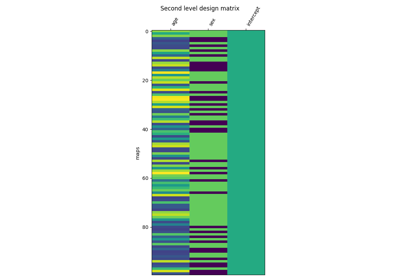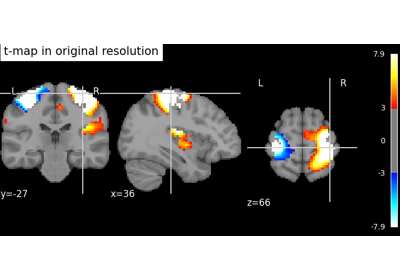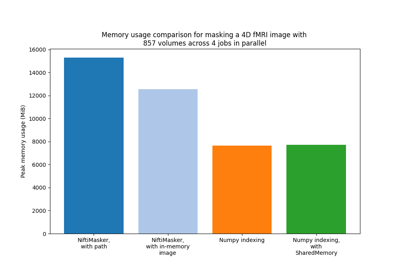Note
This page is a reference documentation. It only explains the function signature, and not how to use it. Please refer to the user guide for the big picture.
nilearn.image.resample_to_img¶
- nilearn.image.resample_to_img(source_img, target_img, interpolation='continuous', copy=True, order='F', clip=False, fill_value=0, force_resample=None, copy_header=False)[source]¶
Resample a Niimg-like source image on a target Niimg-like image.
No registration is performed: the image should already be aligned.
Added in version 0.2.4.
- Parameters:
- source_imgNiimg-like object
See Input and output: neuroimaging data representation. Image(s) to resample.
- target_imgNiimg-like object
See Input and output: neuroimaging data representation. Reference image taken for resampling.
- interpolation
str, default=’continuous’ Can be ‘continuous’, ‘linear’, or ‘nearest’. Indicates the resample method.
- copy
bool, default=True If True, guarantees that output array has no memory in common with input array. In all cases, input images are never modified by this function.
- order“F” or “C”, default=”F”
Data ordering in output array. This function is slightly faster with Fortran ordering.
- clip
bool, default=False If False, no clip is performed. If True, all resampled image values above max(img) and under min(img) are cllipped to min(img) and max(img).
- fill_value
float, default=0 Use a fill value for points outside of input volume.
- force_resample
bool, default=None False is intended for testing, this prevents the use of a padding optimization. Will be set to
FalseifNoneis passed. The default value will be set toTruefor Nilearn >=0.13.0.- copy_header
bool, default=False Whether to copy the header of the input image to the output.
Added in version 0.11.0.
This parameter will be set to True by default in 0.13.0.
- Returns:
- resamplednibabel.Nifti1Image
input image, resampled to have respectively target image shape and affine as shape and affine.
See also



